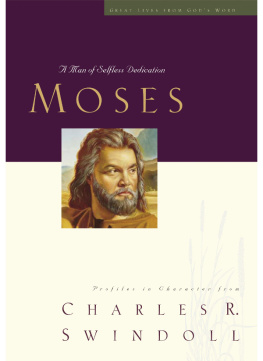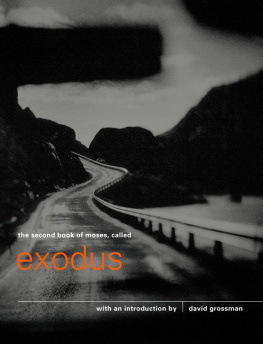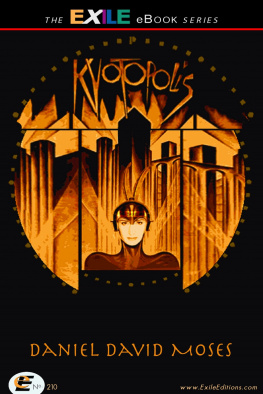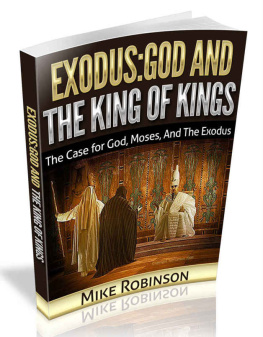(Biblical leader) Moses - Did Moses exist? : the myth of the Israelite lawgiver
Here you can read online (Biblical leader) Moses - Did Moses exist? : the myth of the Israelite lawgiver full text of the book (entire story) in english for free. Download pdf and epub, get meaning, cover and reviews about this ebook. year: 2014, publisher: Stellar House Publishing, LLC, genre: Religion. Description of the work, (preface) as well as reviews are available. Best literature library LitArk.com created for fans of good reading and offers a wide selection of genres:
Romance novel
Science fiction
Adventure
Detective
Science
History
Home and family
Prose
Art
Politics
Computer
Non-fiction
Religion
Business
Children
Humor
Choose a favorite category and find really read worthwhile books. Enjoy immersion in the world of imagination, feel the emotions of the characters or learn something new for yourself, make an fascinating discovery.

- Book:Did Moses exist? : the myth of the Israelite lawgiver
- Author:
- Publisher:Stellar House Publishing, LLC
- Genre:
- Year:2014
- Rating:4 / 5
- Favourites:Add to favourites
- Your mark:
Did Moses exist? : the myth of the Israelite lawgiver: summary, description and annotation
We offer to read an annotation, description, summary or preface (depends on what the author of the book "Did Moses exist? : the myth of the Israelite lawgiver" wrote himself). If you haven't found the necessary information about the book — write in the comments, we will try to find it.
Why does Mosess story resemble that of other, older lawgivers and legendary predecessors? Why are there so many elements of sun and wine god myths in the tale of Moses? What does the focus on the serpent in his story signify? Who were Yahweh and the Elohim?
Did Moses Exist? includes:
- Maps and 126 illustrations
- Extensive bibliography, table of contents and index
- Hundreds of footnotes and citations from primary sources in multiple languages
- Best modern scholarship from credentialed authorities
In the citations and bibliography appear numerous ancient sources such as the Bible, Anacreon, Apollodorus, Aristides, Aristophanes, Arrian, Cicero, Clement of Alexandria, Diodorus, Euripides, Eusebius, Herodotus, Hesiod, Homer, Josephus, Justin Martyr, Megasthenes, Origen, Ovid, Pausanias, Pindar, Plato, Plutarch, Porphyry, Seneca, Strabo, Varro, Virgil and others, often in the original languages, mostly Greek, Hebrew and Latin.
Also discussed are texts and words in Akkadian, Arabic, Assyrian, Babylonian, Canaanite, Phoenician, Ugaritic and other Semitic languages, along with Egyptian, Sumerian, Vedic and Sanskrit.
The existence of Moses as well as the veracity of the Exodus story is disputed amongst archaeologists and Egyptologists, with experts in the field of biblical criticism citing logical inconsistencies, new archaeological evidence, historical evidence and related origin myths in Canaanite culture. --Moses, Wikipedia
There is no historical evidence outside of the Bible, no mention of Moses outside the Bible, and no independent confirmation that Moses ever existed. --Dr. Michael D. Coogan, lecturer on the Old Testament at Harvard Divinity School
We cannot be sure that Moses ever lived because there are no traces of his earthly existence outside of tradition. --Egyptologist Dr. Jan Assmann, Moses the Egyptian
The life of Moses contains elements--canonical and apocryphal--that mark him as a true mythic hero, and certainly he is Judaisms greatest hero and the central figure in Hebrew mythology. --Dr. David Leeming, The Oxford Companion to World Mythology
...the stories of the creation, of the flood, of Abraham, of Jacob, of the descent into and the exodus from Egypt, of the career of Moses and the Jews in the desert, of Joshua and his soldiers, of the judges and their clients, are all apocryphal, and were fabricated at a late period of Jewish history. --Dr. Thomas Inman, Ancient Faiths and Modern
Table of Contents
List of Illustrations
Preface
Introduction
Who Wrote the Pentateuch?
Was Moses an Egyptian Pharaoh or Priest?
The Exodus as History?
The Exodus in Ancient Literature
Hyksos and Lepers
Who Were the Israelites?
The Exodus as Myth
The Lawgiver Archetype
The Dionysus Connection
The Life of Dionysus
The Vine and Wine
The Great God Sun
Yahweh and the Sun
Moses as Solar Hero
Conclusion
Bibliography
Index
(Biblical leader) Moses: author's other books
Who wrote Did Moses exist? : the myth of the Israelite lawgiver? Find out the surname, the name of the author of the book and a list of all author's works by series.








